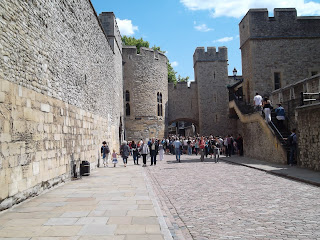During the minibreak, the students of the journalism class got the chance to choose their own destination and for the first time experience a new world on their own. With all of Europe at their disposal, the most popular choice seemed to be Rome.
Five of the journalism students traveled to the Eternal City, surrounded by the remains and ruins of one of history’s greatest civilizations. One of the students, Jessica Holliday, said they “did everything.” The Coliseum was, of course, high on the list.
The trip to Rome also gave this group a chance to escape the colder weather conditions found on the British Isles in exchange for the Mediterranean sun. Despite this, they could not avoid having to cover up for a trip to the Vatican City. Visitors to the ancient and holy grounds cannot wear clothing that is higher than the knees and does not cover the shoulders. Still, they appeared to enjoy it.
One afternoon, Jessica Thompson said she was walking past some little shops and carts after rounding the corner of a street. One had pictures and postcards of local landmarks.
“I saw one with the Spanish Steps on it,” she said. “I asked the seller ‘Oh, do you know where those are?’ and he said, ‘You’re on them.’”
This is just one example of how many world-renowned landmarks surrounded the students in Rome.

Two students, Holliday and John Barr, decided to look further back in the past with a trip to the ruins of Pompeii and the volcano that destroyed it, Vesuvius. Holliday took photos of actual citizens of the city frozen in molten ash and rock, still with the facial expressions of the moment they died.
Some students stayed behind in Dublin to enjoy the city a little bit longer and see the Irish countryside. Miranda Stewart said the Guiness Estate was a wonderful experience.
“Our tour guide called it [Guiness Estate] heaven,” Stewart said. “The countryside is beautiful. The Irish people were friendly, and amusing.”
They also visited Galway for a chance to get away from the more popular tourist areas and get a real Irish experience.
Another destination for journalism students was Edinburgh, the capitol of Scotland. Anna White said the city was one of the most beautiful she had ever seen, but it did require a lot of walking.
Some of the sights within the city to see were Edinburgh Castle (photo to the right), which sits in the center of the city as a shining beacon of Scottish past. In fact, this part of the city, the ‘Old City’, is where Edinburgh began. A trip outside the city gave students a chance to visit the Highlands and Loch Ness (sorry, no sightings of Nessie.)
In the northern stretches of the continent, some students traveled to Amsterdam, Belgium, and Germany. Taylor Gentry began her journey in Amsterdam, residing in a boat-hostel on one of the cities famous canals. There was much to see in the Netherlands, such as the Van Gogh Museum that featured his actual self-portrait. Visits were also paid to the Anne Frank House and the Heineken Brewery where attendees got a 4-D film experience about how the world famous beer is made, bottled and shipped.
“It was so much prettier than I could ever have expected,” Gentry said about Amsterdam. “There was just really pretty architecture. And the people were so nice.”
On her next stop, Gentry went to Berlin where she saw parts of the Berlin Wall now decorated with murals and signs of love or peace, known as the East Side Gallery. The part that had the biggest impact was the Holocaust Monument and Jewish Museum. The museum featured Jewish history from before the Holocaust and provided an inside look into Jewish life in Europe. Although the trip was a success, it did not come without its difficulties.
“Berlin was the biggest language barrier,” Gentry said. “No one spoke English at all. No taxi drivers did, no one.”
Whether they traveled to the continent, stayed in Ireland, or even came back to London to experience the city like never before, all of the journalism students came back with new stories and new experiences to take forward with them for the rest of their lives.



































